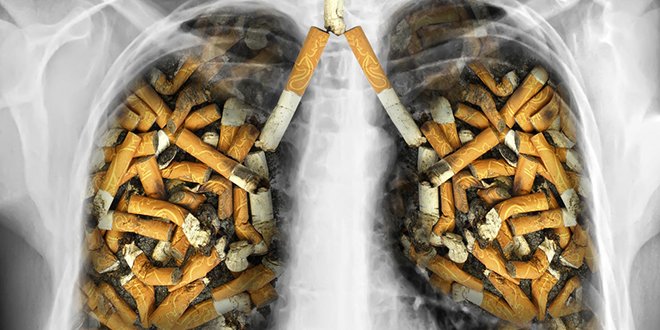
One of the best known risks associated with smoking cigarettes is lung cancer. E-cigarettes offer smokers the ability to provide their nicotine needs without the presence of the large number of carcinogenic chemicals present in tobacco cigarettes. That is also one of the main reasons why smokers make the switch from tobacco cigarettes to electronic cigarettes.
A new pre-clinical study presented at a conference in January this year, and earlier this week, also drew our media drew this theory into question.
You've probably read somewhere else: "According to new American research, smoke from electric cigarettes is as harmful as traditional ones. Scientists at Boston University have new evidence that electronic smoking is not much healthier anyway. The researchers raised a few bronchial cells and looked at the influence of the smoke vapor of both a traditional and an e-cigarette. This shows that the two cell types have the same negative properties that are also found in cancerous swellings. "
In summary, or what remains in the mind of "the people": e-cigarettes stimulate lung cancer.
What the press did not achieve.
The official publication regarding this research contains some important elements that have not been met by the press. The study was not performed on healthy lung cells but on mutated lung cells. These are lung cells in which artificial genes were "activated" that promotes tumors (KRAS) and a gene was "switched off" that suppresses tumors (P53).
During the study, the effect of e-cigarette vapor and cigarette smoke was investigated on cultured lung cells with mutations in the P53 and KRAS genes. This model was used because P53 and KRAS mutations are often found in the airways of smokers or former smokers with an increased risk of lung cancer. The cells were grown in a liquid medium exposed to electronic cigarette vapor or tobacco smoke.
According to the published summary of the study, some of the cells were exposed to low-nicotine e-cigarette vapor. This concentration was determined by the nicotine concentration found in the blood of vapors. Another part was exposed to e-cigarette vapor with a higher nicotine concentration. This concentration was chosen based on the nicotine content to which the cells of smokers (of common cigarettes) are exposed. A third part was exposed to ordinary cigarette smoke. A fourth part was left untouched to allow comparison.
Based on the conducted preliminary research, the researchers claim that the aggressive behavior of human lung cells with P53 and KRAS mutations is enhanced by exposure to e-cigarette vapor. In other words, there is a suspicion that exposure to e-cigarette vapor could potentiate lung cancer in individuals at high risk of disease, namely individuals with mutated P53 and KRAS lung cells.
The findings of the study mention that the cells exposed to cigarette smoke and high concentration of nicotine e-cigarette vapor exhibit cancerous behaviors. It is about colony formation, the process of survival and spread of cancer as well as gene expression, the form in which the gene manifests itself.
The official results of the study show that exposure to low and high nicotine concentrations does not have the same impact. The lower nicotine concentration (based on the level of nicotine in the plasma of vapors) was non-toxic to the cells and showed no elevated colony formation. The high e-cigarette nicotine concentration and the cigarette smoke increased the colony formation after the cells were exposed to the medium for 10 days. The same story applies to the findings regarding changes in gene expression. Here too, it was only the high nicotine e-cigarette situation that showed similar changes as normal cigarettes and this after 96 hours of exposure.
Why should the message sent by the popular media to the world be deprived of?
Because it is not correct and incomplete. If you have read the above carefully, you may already have a better understanding of the whole story. In addition, there are serious concerns about the following procedures and methods: Is this a reflection of what is happening in real life (body)?
The tumor suppressor P53 in the cells was "turned off". It is therefore not surprising that, as evidenced by the publication, invasive behavior in the cells has already manifested at the beginning, thus still before exposure to e-cigarette fumes or cigarette smoke. In addition, the publication will also be published
upvote me plzz